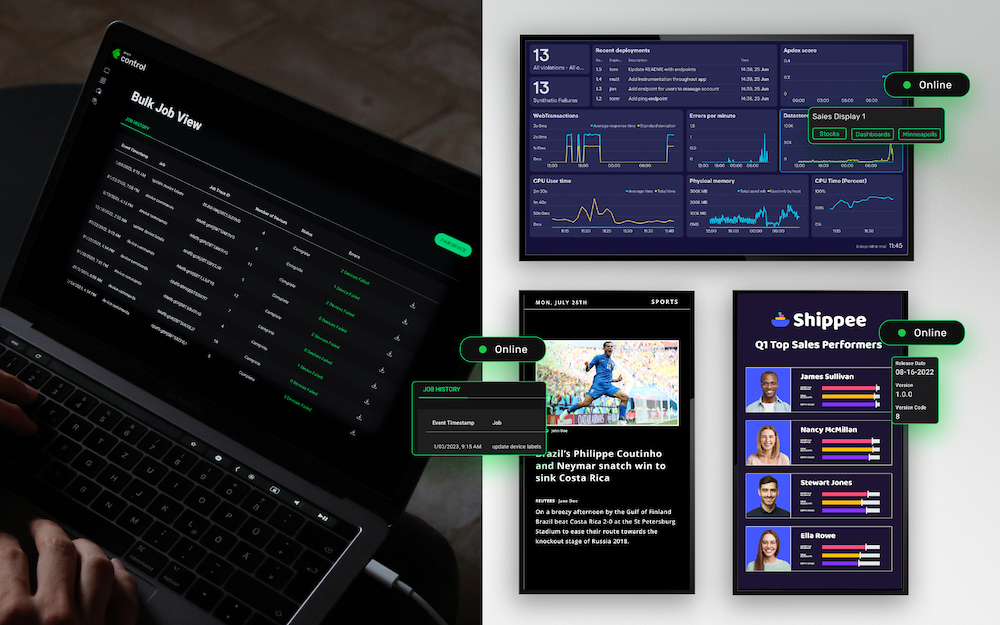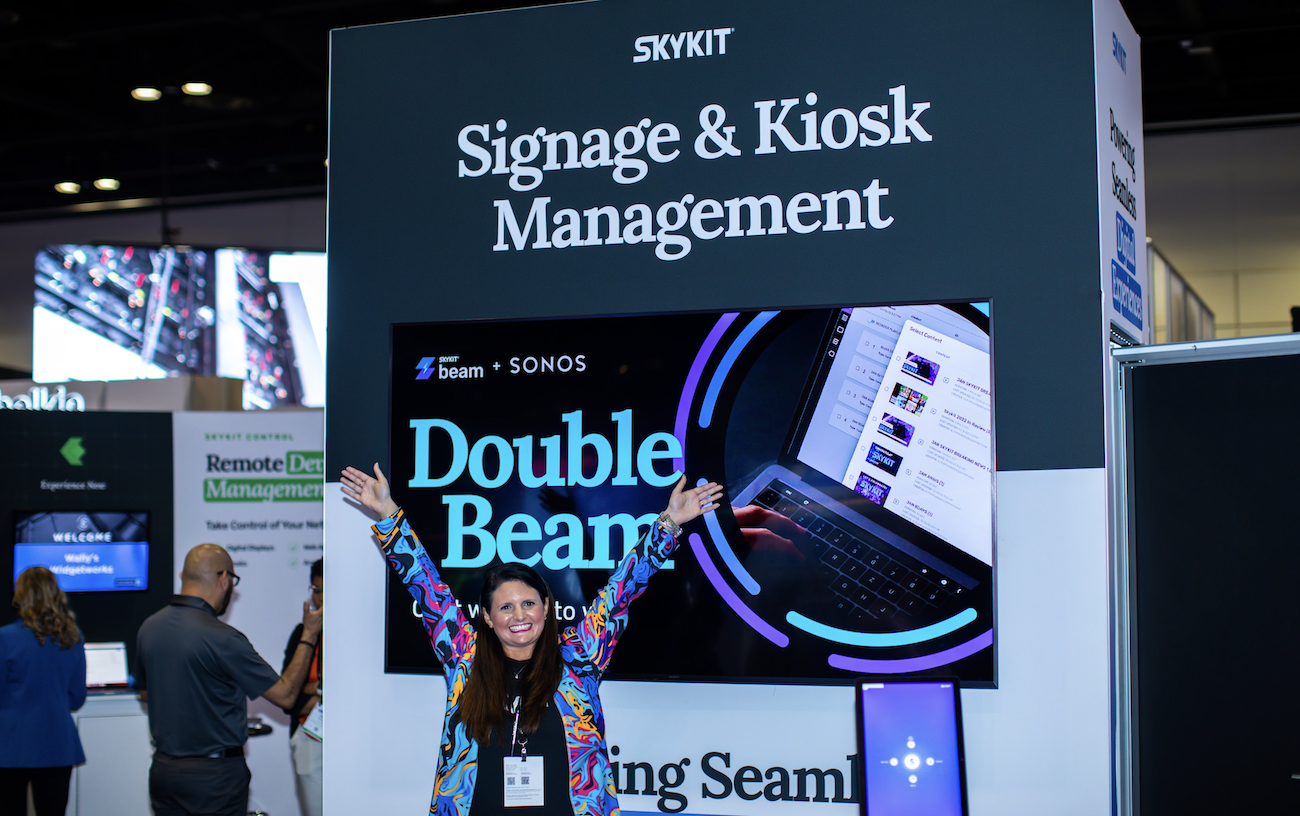Installing Your Digital Signage Can Be Easy
While the retail sector currently makes up the largest part of the digital signage industry, it’s making inroads into restaurants, healthcare, the corporate and financial world, and even education.
You’ve also been seeing some promising statistics on the efficacy of digital signage, and the fact that the industry has a CAGR of nearly 9% is encouraging as well.
Like increasing numbers of business people, you may well be considering installing some digital signage.
After all, it seems to be bringing great results for others, and since prices for digital signage systems have been steadily dropping, it seems like an easy way to get returns on an investment.
However, you can’t just get any old screen, slap it up at random, and expect to rake in the dough. They aren’t a magical revenue-generating charm.
Even if your aim isn’t an advertisement, you still have the information you want to communicate.
If the screens aren’t doing the best job of communicating the information that they possibly can, they may not offer much advantage over an 8.5×11” sheet of paper (printed, naturally, with centered Comic Sans) in getting your point across.
You must put serious thought into your strategy for installing your digital signage in order to maximize its usefulness and accessibility to your audience.
Case in point: a clothing retailer who shall remain nameless uses small digital price tags that wireless sync prices with their database.
While that might save time and money compared to updating the prices manually, I’ve heard friends complaining about how difficult the tags are to read.
The LCDs are low-contrast, and if you are standing even slightly to the side, they’re illegible.
Would there be a better way to do it? Would you like to avoid falling pitfalls in installing your digital signage? Here are seven criteria for you to consider while you plan.
7 Considerations When Installing Your Digital Signage
1. Installing Your Digital Signage Considerations: Your purpose
Your purpose in installing your digital signage will probably inform all of your other decisions about it.
Who is going to see the signs? Are they primarily intended for paying customers? Students? Employees?
What are the signs intended to communicate? Is the primary purpose advertisement? Is it something highly specific, like the aforementioned price tags? Are they a wayfinding resource? Will they be presenting data, displaying schedules, or sharing internal memos?
Where will they be located—inside or outside? This article focuses on indoor signage. (We’ll get into finer details of placement in number six.)
2. Installing Your Digital Signage Considerations: Type of display screen
There’s a surprising number of options available, each with its own strengths and weaknesses. Here’s a quick breakdown.
–OLED: This fancy newcomer offers infinite contrast (since individual pixels can be turned on and off), potentially very high resolutions, low weight, and high energy efficiency. However, for now, they’re relatively expensive—as the technology develops, costs will go down.
-LCD: LCD screens are a digital signage workhouse. Relatively affordable, lighter than plasma screens, and available in sizes up to 95” and resolutions up to 4K, they’re versatile. However, they are limited in their brightness output, contrast, and viewing angles.
-Plasma: Plasma screens offer a wider display angle and more uniform light output than LCD screens, along with higher contrast and possibly a lower cost. However, they are heavier and consume more electrical power than LCD screens.
–Projection: A projected display is appealing for many reasons. A single projector will be much less expensive than a very large screen or video wall. They also have a high brightness output: up to 50K lumens. High-resolution options exist. The main drawbacks are limited interactivity and the need for a flat, white projection surface.
–ePaper: ePaper is a relative newcomer to the digital signage market, but it shows significant promise in certain applications. These displays are generally limited to black-and-white or grayscale, and are usually small—think e-reader sized. (I’ve seen ePaper displays that include color and go up to 32”, but they cost $4500 apiece.) They have a relatively low refresh rate.
However, they can maintain a fixed image on their screen without consuming any energy—some can last up to three years on a single battery pack. They are high-contrast and impervious to ambient light, and they are unobtrusive. They could be an ideal substitute for the price tags mentioned before.
3. Installing Your Digital Signage Considerations: Screen size
Screen size will be closely related to and limited by your choice of screen type. Flat panels (that is, non-projection options) rapidly become more expensive above 55”. This might indicate that a projector might be a wise choice.
Of course, your purpose will also tie in here. The screen should be large enough to display the necessary information in a way that will be legible at the distance your viewers will be positioned at—see number six for more.
4.Installing Your Digital Signage Considerations: Mounting strategy
There are three possibilities for mounting: floor-mounted, wall-mounted, and ceiling-mounted. While these might seem self-explanatory, it wouldn’t hurt to go over them in more detail—especially because, depending on your purpose for installing the signage, one might hold an advantage over another.
-Floor mounted: Floor-mounted signage can be found on a stand, trolley, or pedestal. Kiosks also count as floor mounting. A floor-mounted sign can be positioned within easy reach for interaction and angled to be more user-friendly. It’s also an alternative when wall and ceiling mounting isn’t possible, perhaps when the sign needs to be in the middle of a high-ceilinged room.
-Wall mounted: Wall-mounted signage is attached to the wall, either directly or using a fixed or articulable arm. This option is often used for video walls, as the name would imply, and digital menus.
-Ceiling mounted: This is likely the most common option because it doesn’t take up valuable floor space and allows the screen to be located away from a wall. Of course, it won’t work for touchscreen applications.
5. Installing Your Digital Signage Considerations: Location
This is an obvious one, but you still need to think about it, of course: Where will you be putting your displays?
You want to position your screen somewhere it will be seen by the maximum number of people to whom it would be relevant, at a place where it will be relevant. This, of course, ties back to your purpose in installing the displays.
For example, if you had wayfinding kiosks, you wouldn’t bury them deep in the heart of your mall—you’d position one at each entrance, and perhaps a couple at intersections of wings of the mall and the food court.
Watch the paths people take through your building and where their eyes are already glancing to determine high-exposure locations. Avoid odd corners and dead ends where people rarely look or wander.
6. Installing Your Digital Signage Considerations: Screen placement
This ties into location, of course, but let’s focus on the more nitty-gritty aspects.
–Distance: How far from the display will its viewers be? Here’s some rules for determining that.
With an LCD screen, use the 4/6/8 rule. That means that viewers can be four times the image height away in order to process complex information, six times to view simple information, and eight times for casual perusal.
With LED, take the pixel pitch and multiply by 1000 to find the minimum viewing distance.
No analytical method yet exists for finding the minimum viewing distance for a projected image, though one’s on the way.
-Angle: Depending on the type of screen and location, you may need to angle the screen. LCD screens become less legible when viewed at an angle, so if you have one mounted high on a wall you might want to tilt it downwards.
-Light exposure: Consider the ambient light at the location where the device(s) will be installed. As discussed, different types of displays have different maximum outputs, with projectors likely the brightest and LCDs usually the least bright. You should also consider possible sources of glare, like nearby windows or spot lighting.
7. Content management strategy
How do you intend to update the content on your screens? Gone are the days when you had to plug in a VHS player. Now, you can update content wirelessly and instantly, using a device like a Chrome Cast to stream the content from your computer. Something like an electronic price tag is probably RF-equipped. There are wired options as well.
Conclusion
Are you reeling a little from the many things to consider? I’d encourage you to go back to number one and think about your purpose in installing your digital signage system. As we’ve seen, it’ll inform your strategy and decisions in most of the other areas.
With a solid purpose in mind, and good information about your options (found here on the Skykit blog, or elsewhere on one of the many Internet resources), the rest should fall into line. Enjoy your effective signage!
Do you have a resource to recommend for planning? Did we help you? Share with us in the comments.



